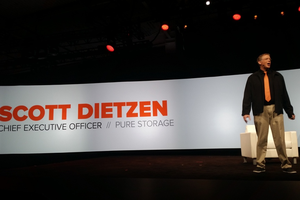Imanis Data Seeks To Automate NoSQL Backups

We can tell that NoSQL databases are being used to house important data because people are now getting concerned about backing them up. Imanis Data is one of a few new companies focused on this specific challenge.
“NoSQL is not a niche, but it's very much under-served,” said Imanis VP of product, Jay Desai.

Database backup isn't new by any means, but the different technologies used for NoSQL database platforms (Apache Cassandra, MongoDB, Couchbase, and Amazon's DynamoDB, among others) mean they require different backup techniques than those used for SQL databases. The under-served nature of the market Desai refers to has largely been due to the way NoSQL databases were initially used.
In many cases, data was loaded in bulk from a primary data source into a NoSQL database for specialized processing. Reloading the data from that primary source was easy enough if something untoward happened to the NoSQL database. Full system backups also work fine. The trouble is that these are blunt instruments compared to the more targeted restore options that have been available for SQL databases for decades. These bulk restores also take a long time, particularly for very large datasets of Big Data fame.
With the growing maturity of NoSQL solutions, organizations have started storing important, original data in NoSQL databases, particularly for cloud-native applications. Losing that data isn't an option, so organizations are starting to find budget to solve this problem. Where there's budget there are vendors.
The NoSQL side of the data protection market has clearly heated up. Enterprise-backup focused startup Rubrik acquired NoSQL backup specialist DatosIO earlier this year, spending part of its recent $180 million funding round. SMB and mid-market darling Veeam acquired N2WS in January in an all-cash transaction of $42.5 million.
But modern data management and protection is about much more than simple backup and restore. Ensuring data is protected, and detecting data at risk, are two key functions that newer systems are automating, rather than relying on human operators to monitor job-scheduling consoles.
Imanis Data's latest version, 4.0, adds machine-learning capabilities to perform optimal backup scheduling, freeing human operators from a task that humans aren't very good at in the first place.
“SmartPolicies provide autonomous, machine-learning powered backup,” said Desai. The system asks you “How much data can you afford to lose?” and then works out the optimal schedule to ensure you don't lose more than that much data, warning you of any resource constraints that might impact the system's ability to carry out your wishes.
The system also watches itself, which enabled Imanis to add what it calls ThreatSense, an ability to detect abnormal behaviour as it goes about its usual data protection work. If a system is hit with ransomware, or a rogue admin bulk-deletes a bunch of data, ThreatSense will notice the change as it performs the next backup. Computers are quite good at untiring surveillance, so this is another task better suited to automation than having humans tasked with unblinking watchfulness. Instead, humans can deal with the anomalies that the system throws up, and these decisions can be fed back into the machine-learning models, making the system smarter over time.
This kind of automated operations is such an obviously good idea that we should expect all data protection vendors to add something like it if they don't have these features already, and not just for NoSQL databases. Indeed, we see these automated approaches in all the new data protection startups, and heritage vendors are abandoning their manual job-planning approaches in favour of what the market now expects.
While there's plenty of hype about AI and machine learning, logistics scheduling algorithms have been common in a variety of fields for some time. We should be surprised that these approaches have taken this long to arrive in backup job scheduling. Ignore the buzzwords and look at the function being performed.
I see Imanis as a ripe target for acquisition for a heritage vendor looking to add some NoSQL to its addressable market, or possibly one of the well-funded data protection startups that haven't already bought something for this purpose.
It's certainly an exciting time to be in backup.
This article first appeared in Forbes.com here.


